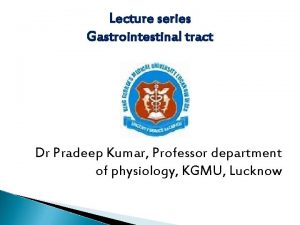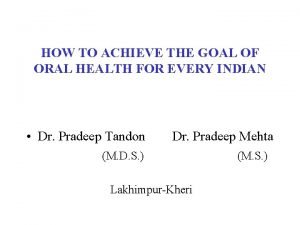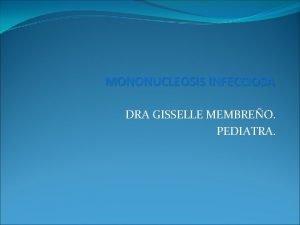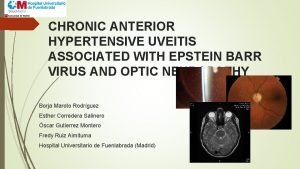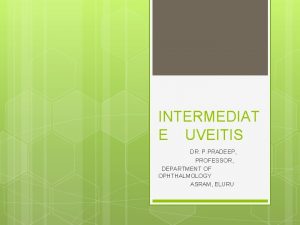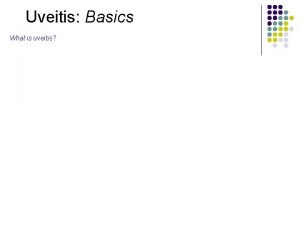INTERMEDIAT E UVEITIS DR P PRADEEP PROFESSOR DEPARTMENT












- Slides: 12

INTERMEDIAT E UVEITIS DR. P. PRADEEP, PROFESSOR, DEPARTMENT OF OPHTHALMOLOGY ASRAM, ELURU

- Inflammation of parsplana ciliaris, peripheral retina, choroid and vitreous base.

EPIDEMOLOGY: 10% of all cases of uveitis. 20% of cases in children. Bilateral in 80% cases. M=F equal distribution. Onset: bimodal (2 & 4 th decade).

ETIOLOGY: Idiopathic (80% cases). TB , syphilis, sarcoidosis, Lyme disease. CLINICAL FEATURES: Symptoms: Mostly asymptomatic. if symptomatic, Floaters of insidious onset is most common presentation. Blurring of vision , decreased vision may occur later.

Anterior segment signs: v externally eye looks white. v low grade flare and cells. v Few KPs due to spill over anterior uveitis. v Lens may show complicated cataract in late stages.

Posterior segment signs: vitreous cells(+1 to +4). Anterior vitreous condensation. Snow ball or cotton ball opacities (Ants eggs ) exudates present near the Oraserrata in inferior Quadrant. Snow. Banking – fibrovascular plaques over pars plana with or with out associated peripheral retinal phlebitis form hallmark. Best seen with indirect opthalmoscopy and goldman three mirror examination. Severe vitreous opacification presenting as leucocoria. Snowballs peripheral periphlebitis and snowballs

inferior snowbanking and snowballs

COURSE : usually chronic with three distinct patterns. Single, self limiting disease (10% cases). Prolonged course without acute exacerbation (60% cases). Chronic smoldering course with multiple subacute exacerbation (30% cases). PROGNOSIS : Relatively good if well treated.

Complications : Complicated cataract, Cystoid macular oedema, band keratopathy, secondary glaucoma, vitreous haemorrhage and tractional retinal detachment.

TREATMENT: Modified four step protocol of kaplan is as below: STEP 1 : periocular and systemic steroids Posterior subtenon injection of triamcinolone 40 mg/3 weeks * 3 injecions are indicated initially. In unresponsive cases systemic steroids are given. o STEP 2 : immunosuppresive drugs such as cyclosporine, Azathioprine, methotrexate or cyclophosphamide given (with careful monitoring) When step 1 fails.

STEP 3 : Cryotherapy or indirect laser photocoagulation tried in cases with snowbanking. STEP 4 : parsplana vitrectomy indicated in severe cases and when step 3 fails. It helps by removing inflammatory debris, antigenic load and possible traction on macula.

THANK YOU



